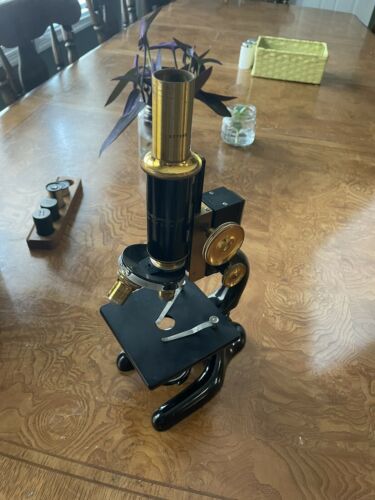-40%
Carl Zeiss Jena Refractometer 1907 Serial NR 4371 with Tools and Original Case
$ 448.8
- Description
- Size Guide
Description
Carl Zeiss Jena Refractometer 1907 Serial NR 4371 with Tools and Original Case. Shipped with FedEx Ground or FedEx Home Delivery.This Butter Refractometer was manufactured in 1907 with the Carl Zeiss company in Germany verified by the early serial number (4371) and photos provided to the original company. The description from Carl Zeiss archives indicate there should be a sample stand, mirrors, prisms and tubing included but is missing from this piece. The original wooden box also includes glass instruments, a box of metals, and a small liquid jar.
"The butter refractometer is used to determine the purity of liquid and solid edible fats and organic solvents as long as their refractive index is between 1.418 and 1.492.
This measuring range includes butter, margarine, beef tallow, pork fat, coconut and cocoa butter, cheese, cooking oils, cod liver oil, lubricating oils, soapy fatty acids, linseed oil, varnish, petroleum, paraffins, ceresine, glycerine, etc.
This means that the butter
refractometer
is used in food factories, customs offices, Laboratories of dairies, margarine factories and other factory laboratories.
The butter refractometer consists of a heated Abbe double prism and a telescope that is permanently connected to it, the objective of which can be moved using a micrometer screw.
A numbered scale is set in the focal plane of the telescope.
The light is thrown through the mirror into the double prism and penetrates the thin layer of liquid between the glass prisms.
With this beam path, a boundary line of total reflection is created in the plane of the scale.
The measurement of this refractometer is based on the exact determination of this point on the scale.
The scale divisions can be converted into refractive indices using a table."
Original images and Zeiss archive item description can be provided upon request. Add to your collection with this very neat and rare instrument!




















